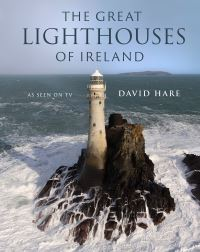The Great Rush of Birds in March 1911

Roseate terns at Rockabill lighthouse. I have no idea if they are migratory. Photograph Aidan Arnold On March 29th to 30th 1911, a great rush of birds was observed along the south and east coasts of Ireland from the Old Head of Kinsale up to Balbriggan. It was apparently so noticeable that newspapers commented on it for days afterwards. The excessive numbers appeared for several days afterwards but the night of March 29th / 30th appears to have been the peak. Ornithologist, Richard Manliffe Barrington, whose work with lightkeepers in the last 20 years of the nineteenth century had done so much to aid our understanding of bird migration, wrote a paper on the event a few months later. Thanks to his lightkeeping connections, he was able to pinpoint the extent of the bird rush and suggest a probable cause. I quote from his paper. Turning now to the light-stations on the coast, the most northerly from which any special number of birds was reported is BALBRIGGAN Mr. E. A. Kennedy, lig...



